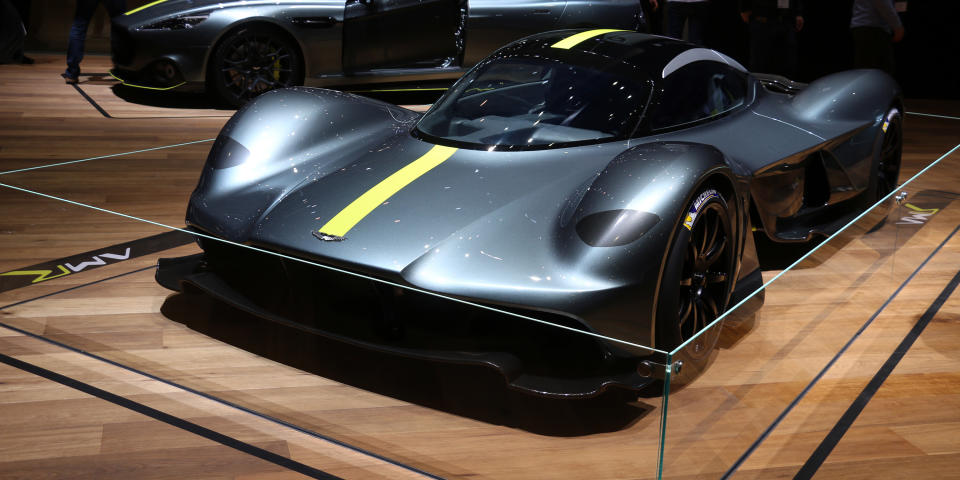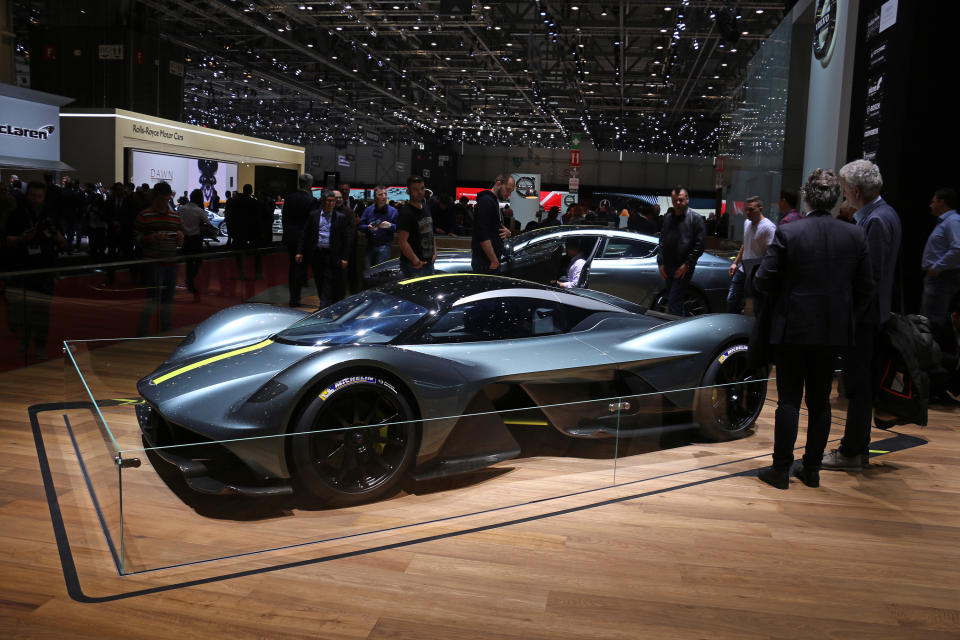Everything We Know About the Aston Martin Valkyrie

It's been Adrian Newey's longtime dream to built an insanely capable road car, one that harnessed Formula 1 technology in a road-legal package. When people started paying $2-3 million dollars for certain hypercars, nothing could stop Aston Martin CEO Andy Palmer from teaming up with Newey, the chief technical officer of Red Bull Racing's Formula 1 team, to embark on just such a project.
Aston Martin's AM-RB 001, also known as Valkyrie, will act as the halo model for the brand's new range of mid-engined sports cars, and since the project was first revealed late in 2016, we've learned plenty about what to expect from Aston's new moonshot. Here's what we're expecting.
The chassis:
The Valkyrie will use a full carbon fiber monocell tub, produced by Canadian motorsports supplier Multimatic. They were Aston Martin's supplier for the One-77 and the Vulcan, and are responsible for, among other things, the carbon fiber structure of the new Ford GT.
The engine:
A 900 horsepower naturally-aspirated 6.5 liter V12 built by Cosworth. This also means that the Valkyrie will pack twice as many cylinders as AMG's Project 1, the Mercedes hypercar built around an F1-based twin-turbo V6 with hybrid assist.
The gearbox:
Ricardo, the company most famous for making McLaren's engines and the Bugatti Chrion's double-clutch gearbox, just added the Valkyrie's transmission to its résumé. No word on what type of gearbox will be paired with those 900 Cosworth horses, but we do know that AMG will use a single-clutch unit in Project 1 due to this layout's weight advantage and durability behind an 11,000 rpm engine. No currently-available double clutch unit can take that. We don't yet know how high the Valkyrie's engine will rev, but there's a chance it could utilize a single-clutch transmission similar to the AMG Project 1.
The wheels and tires:
Since the Valkyrie is claimed to top out at 250 mph and hit your body with 4.5 g of cornering grip (in racetrack trim), Michelin - tire supplier to Bugatti and Koenigsegg - has raised a hand. Aston's hypercar will run on Pilot Sport Cup 2 tires: 265/35 in the front, 325/30 at the rear, mounted to lightweight centerlock magnesium alloy wheels (20 x 9.5 inches front, 21 x 11.5 rear).
The brakes:
Guess what! Four-wheel disc brakes! To be more specific, massive carbon discs and calipers from Alcon and Surface Transforms, with the ESP and ECU modules supplied by Bosch's motorsport division.
The electronics:
In order to harvest kinetic energy during braking, the Valkyrie will use an F1-inspired energy recovery system, supported by battery technology from electric supercar startup Rimac. The Croatian company also supplies Koenigsegg with similarly cutting-edge battery packs for the Regera. The Aston Martin's LED lights, meanwhile, are supplied by British engineering company Wipac. Not Lucas, Wipac!
The aerodynamics:
Engineered by Red Bull Racing, the Valkyrie will be a ground-effect car producing 4000 lbs of downforce without a traditional rear wing. We have no idea how all those underbody (and seemingly through-the-body) aero channels will impact interior space, but with the 0-200 sprint taking just 10 seconds, we're inclined to give it a pass.

Production:
Aston Martin will build a total of 150 road cars (including the prototypes), followed by an additional 25 track-only cars. Deliveries are set to start in 2019.
It's going to be dramatic.
You Might Also Like

 Yahoo Autos
Yahoo Autos 